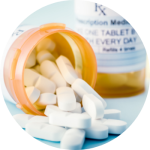Part D Costs
What you pay each month for a Part D plan is called your premium. Your Part D monthly premium will depend on the plan you choose and your income level. Part D has a yearly deductible, which is an amount you pay first, before the plan starts to pay anything for your prescription drugs. In 2025, the maximum deductible for a Part D plan is $590. After you pay the deductible, Medicare pays 75% of your drug costs and you pay 25%.
depend on the plan you choose and your income level. Part D has a yearly deductible, which is an amount you pay first, before the plan starts to pay anything for your prescription drugs. In 2025, the maximum deductible for a Part D plan is $590. After you pay the deductible, Medicare pays 75% of your drug costs and you pay 25%.
What you pay is called your “out-of-pocket” costs, because you pay for them out-of-your own pocket. “Out-of-pocket costs” do not include your monthly premium. Beginning January 1, 2025, once your out-of-pocket spending reaches $2,000, you will automatically get catastrophic coverage and won't have to pay a co-payment or co-insurance for covered Part D drugs for the rest of the calendar year.
Each month, you will get an Explanation of Benefits (EOB) notice from your drug plan. It shows how much you have paid for drugs during the period, and how much more you still need to pay to move to the next phase of coverage.
More information on Medicare costs
Understanding a plan’s formulary will save you money. Formularies may have two or more cost levels, called tiers. A drug on a higher tier will have higher costs for you. The highest tier in most formularies is the “specialty” tier, which includes many cancer drugs. The co-payment and co-insurance amounts will depend on the tier of the drug you are taking. For example, a tier 1 drug may have a $10 co-payment, while a tier 5 specialty drug may have a 30% co-insurance amount. Make sure the plan you choose covers the prescription drugs that you take.




